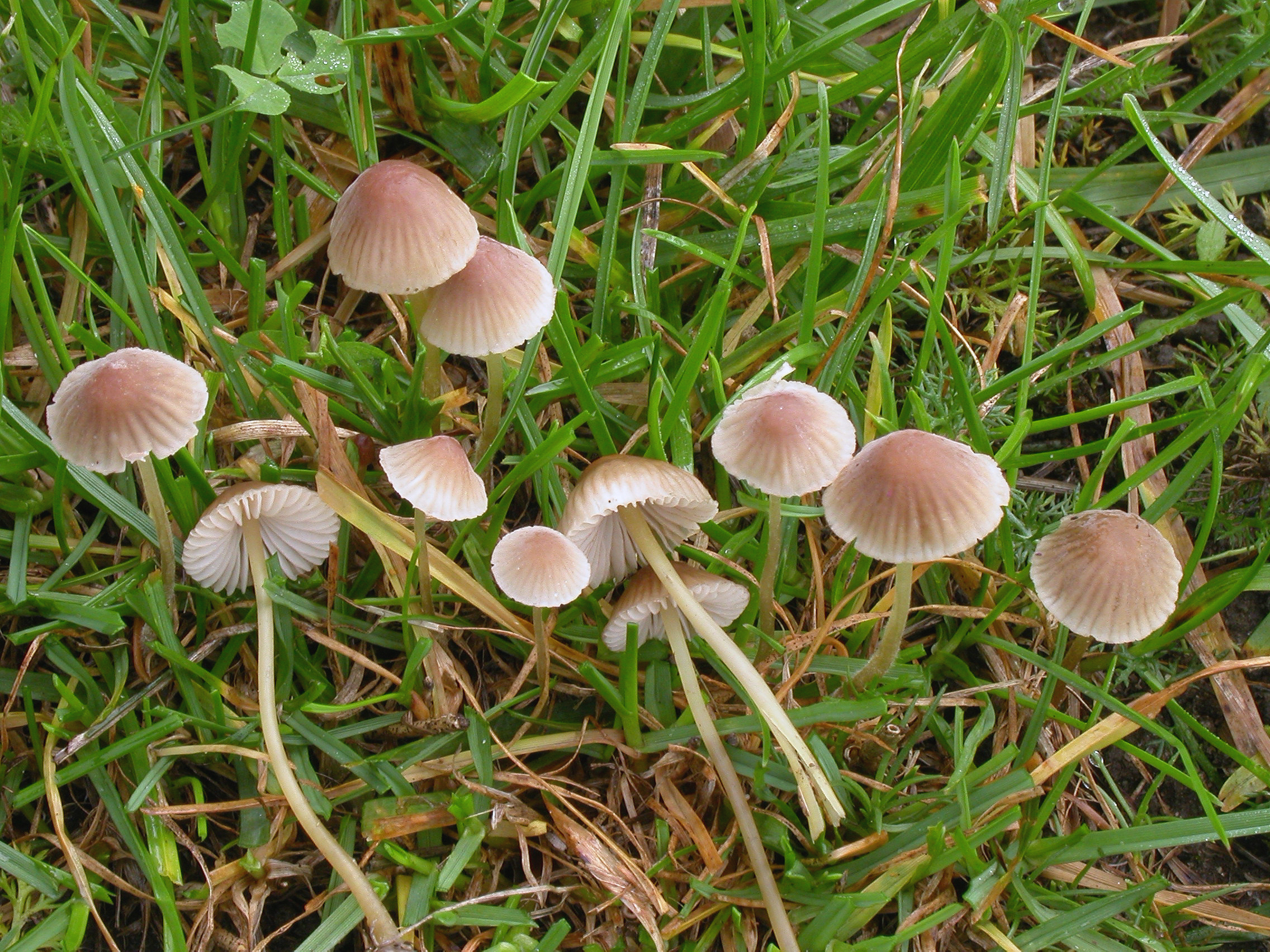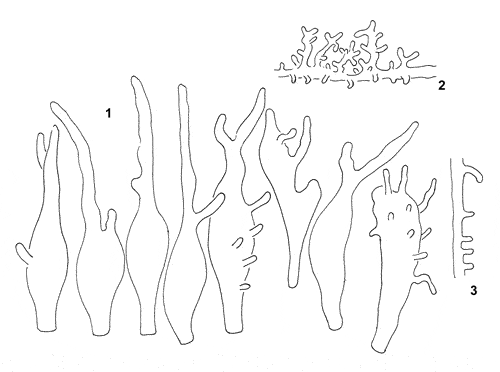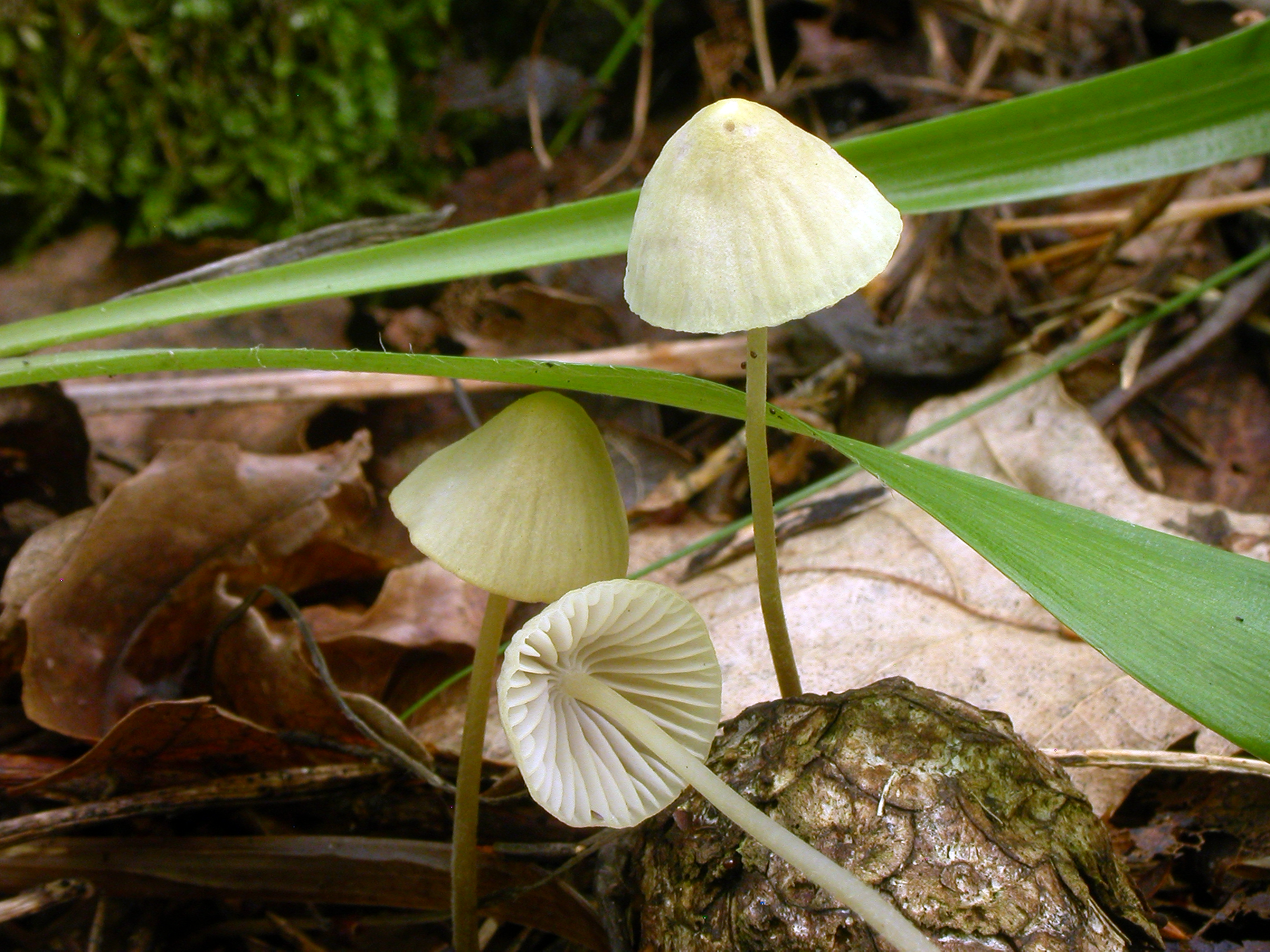Mycena olivaceomarginata
Mycena olivaceomarginata
Description
1. Cheilocystidia, 2. Hypha of the pileipellis, 3. Hypha of the cortical layer of the stem.
Cap 5-20 mm across, conical or parabolical, sulcate, translucently striate, pruinose, glabrescent, somewhat lubricous, hygrophanous, greyish to grey-brown or dark brown, often with a yellowish or olivaceous tint, or with a pinkish or reddish shade at the centre. Gills 13-20 reaching the stem, adnexed, dorsally intervenose with age, whitish to grey to olivaceous grey, the edge yellowish brown, pink-violet or reddish brown, sometimes not coloured or somewhat coloured only very close to the margin of the cap. Stem 20-80 x 1-2 mm, cylindrical, equal, pruinose at the apex, glabrous farther down, whitish to pale grey or olive yellow at the apex, gradually becoming darker below towards the grey-brown, sometimes dark brown base, which is densely covered with long, white fibrils. Odour nitrous or indistinctive. Basidia 24-40 x 7-11 µm, clavate, 4-spored. Spores 9-11(-13) x 5-7, Q = 1.7-2.2, Qav ˜ 1.9, pip-shaped, amyloid. Cheilocystidia 30-80 x 8-20 µm, forming a sterile band, ±with reddish brown contents, fusiform, clavate to somewhat irregularly shaped, long- to short stalked, smooth or covered with few, rather coarse, simple to furcate excrescences up to 27 x 2-3.5 µm. Pleurocystidia absent. Lamellar trama dextrinoid. Hyphae of the pileipellis 2-4.5 µm wide, covered with simple to very much branched excrescences 2.5-30 x 1-2 µm, forming dense masses. Hyphae of the cortical layer of the stem 2-3.5 µm wide, sparsely covered with cylindrical, straight to curved excrescences 2-5.5 x 1.5-2.5 µm; terminal cells rarely seen, diverticilate, not inflated. Clamps present in all tissues.
Ecology and distribution
Gregarious among grass and mosses in meadows, open grassland, lawns etc. Autumn. Rather common.


